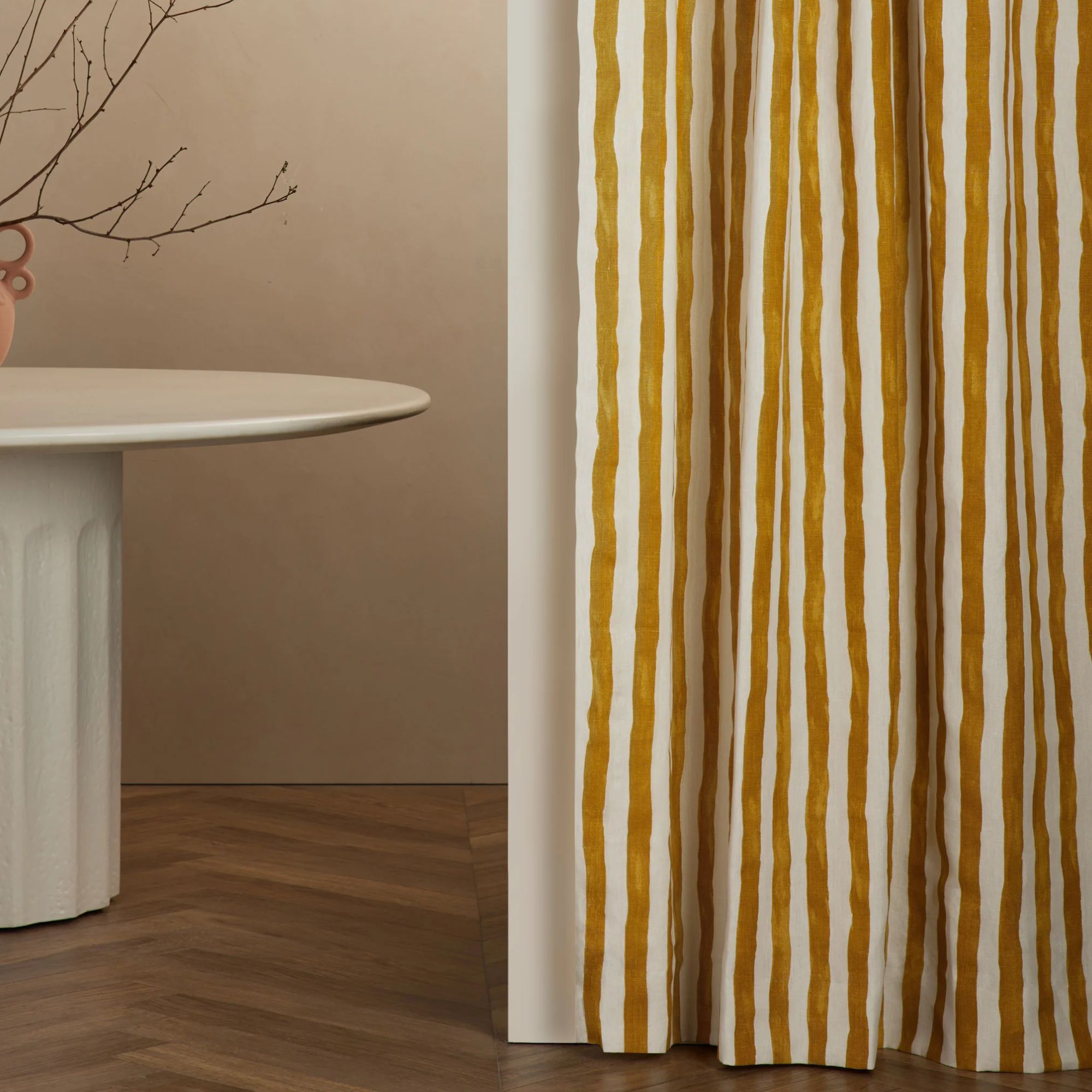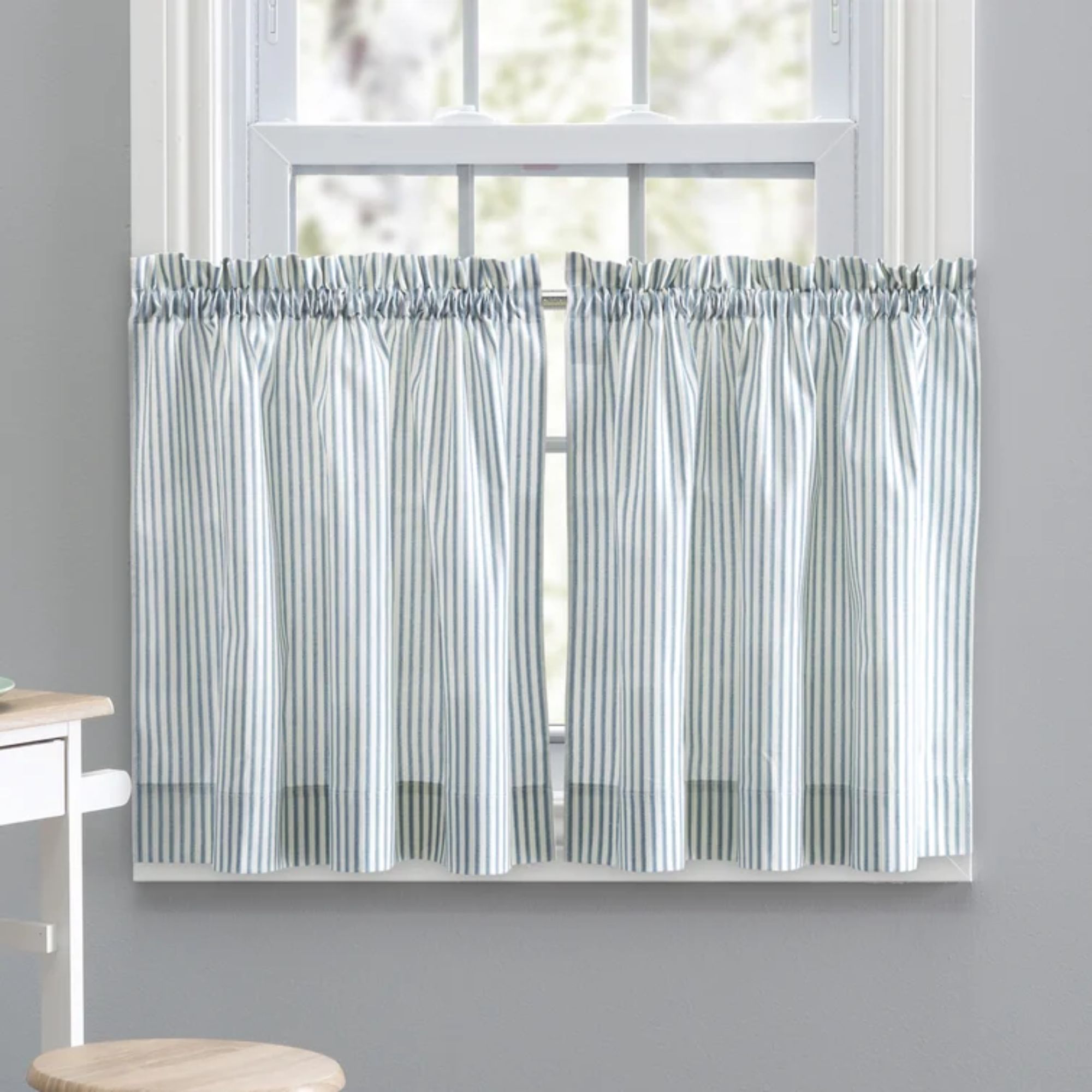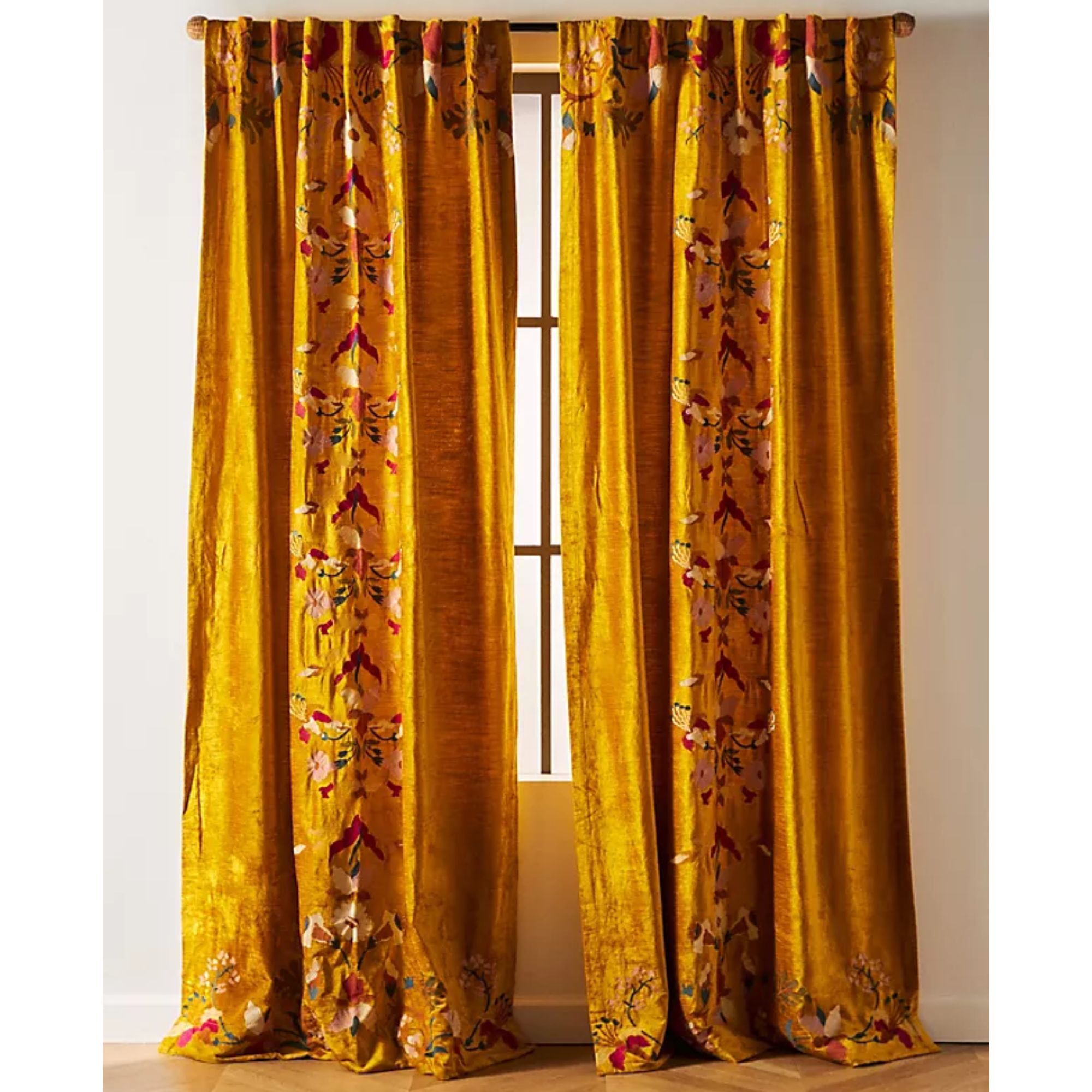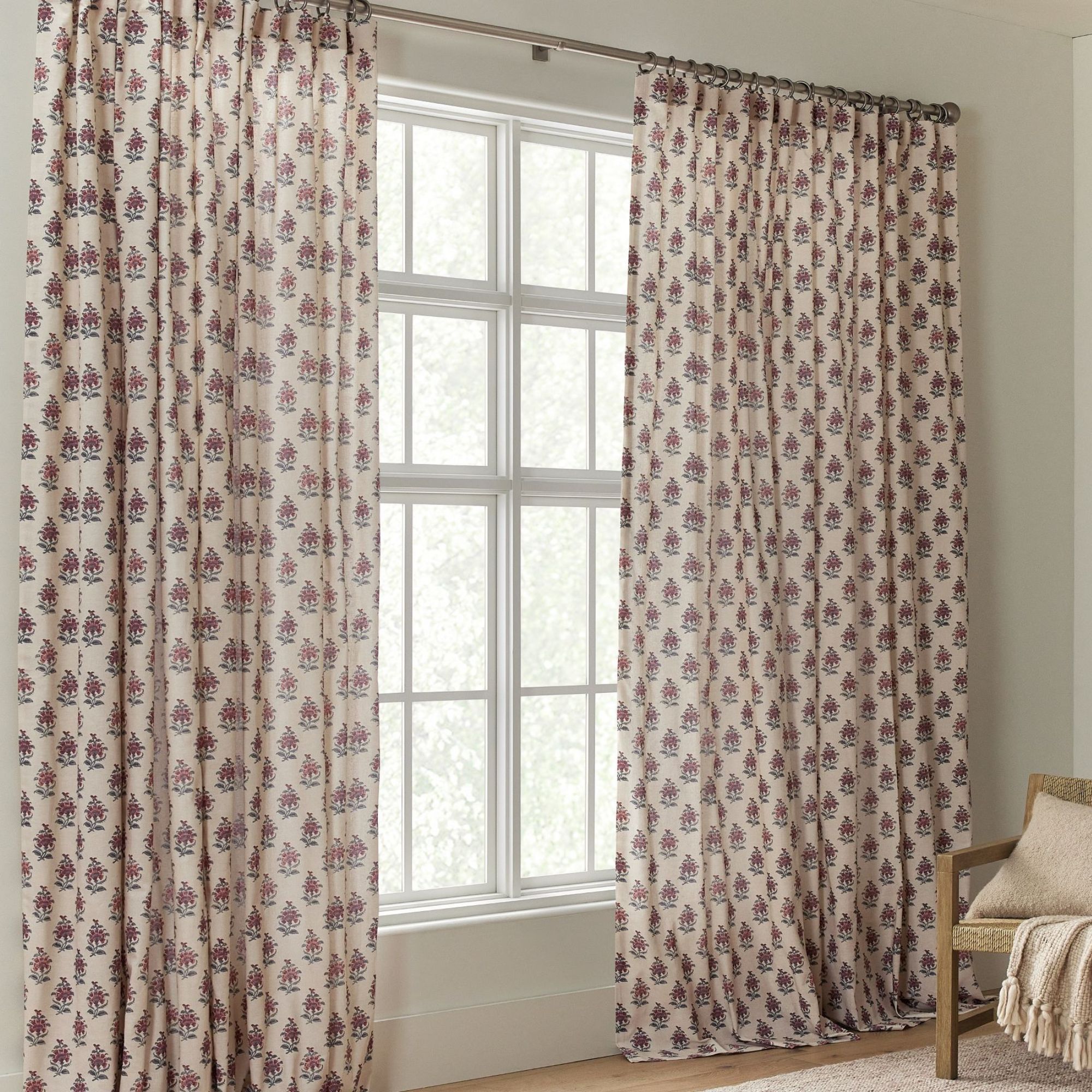Are curtains out of style? Designers share their thoughts on the timeless window treatment
With so many window treatments out there, have traditional curtains had their day? We ask the experts for their advice


Choosing window treatments can often be an afterthought, but ask any interior designer and they will tell you that they are integral to the look, function and comfort of a room.
With so many options available, from curtain ideas and blinds, to shutters and window film – it’s tricky to decide which style is best suited to your space. Curtains are often considered the traditional choice, but when it comes to window treatment ideas are curtains out of style?
While some see them as timeless and elegant, others argue they can feel dated compared with sleek roller blinds and shutters. To get the verdict, we asked interior designers and industry experts what they thought, plus we share their advice on how to keep curtains looking timeless and fresh for window treatment trends.
Are curtains out of style?
When we asked interior designers if curtains were out of style for this year's window treatment trends, the feedback was unanimous: curtains are most definitely still in style and are great for bringing character and comfort to any room.
Practically speaking, curtains offer essential control over light and privacy, plus they help insulate heat and sound, however, they can also make a wonderful design feature. From discreet, lightweight voiles to thick, full-length black-out drapes complete with pelmets, there’s a style for every room, plus there’s an infinite array of fabrics to choose from to coordinate with any interior scheme.
‘Curtains are very much in style, and are an important part of setting the tone for a room. I like to think that curtains to a room are like shoes to an outfit,' says Kristen Scharer of the Washington, DC and Ohio-based Kristen Scharer Interiors. 'Curtains have an incredibly transformative ability to dress-up or dress-down a room depending on their design, style, material, length, width, level of transparency, etc.’
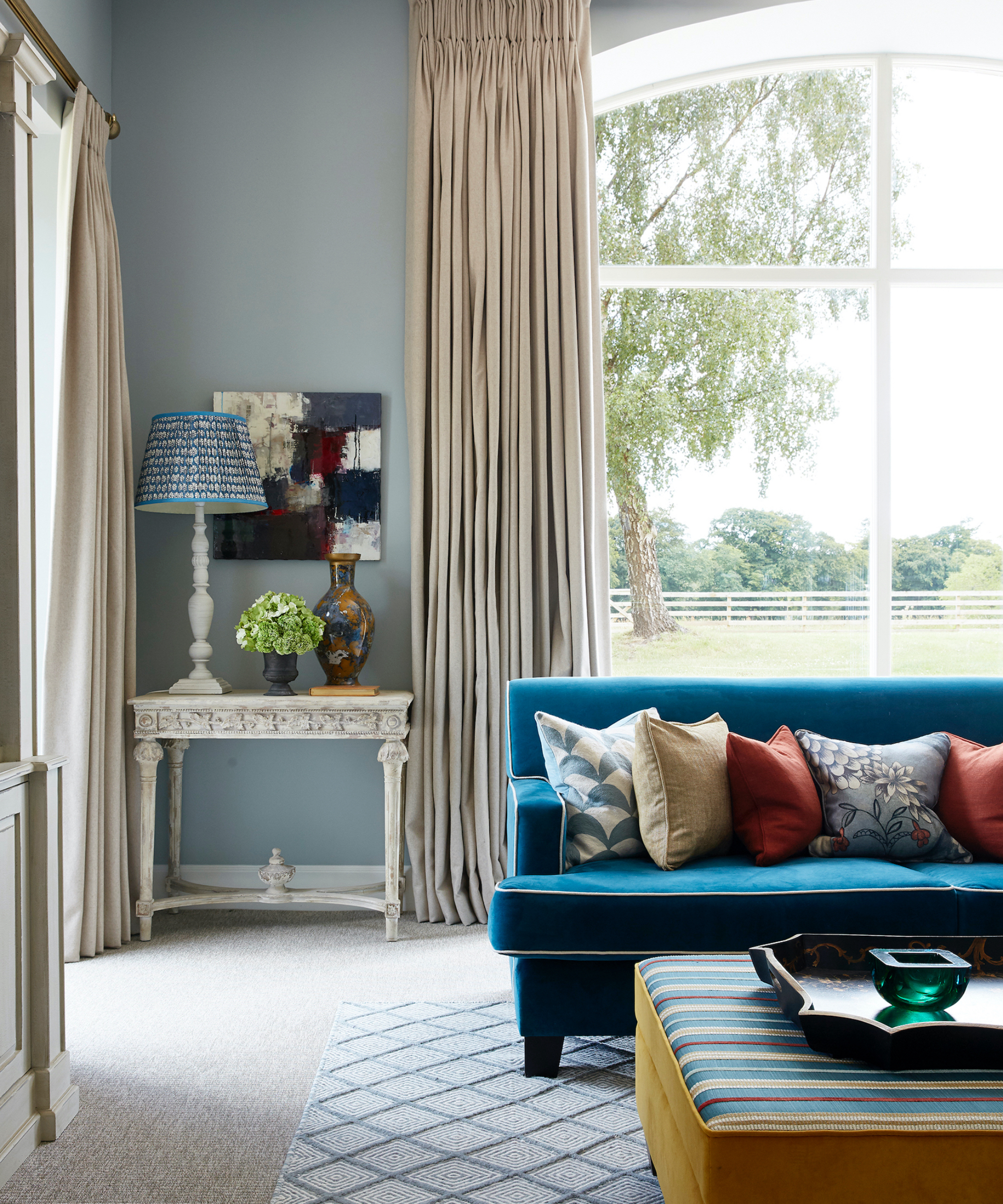
Emma Deterding, founder of Kelling Designs and KD Loves agrees that curtains have enduring appeal. 'Curtains remain a timeless staple in interior design, offering a blend of functionality and the opportunity to add a design-led finishing touch. They are a versatile option that complements both modern and traditional spaces, and aside from the beauty and impact they can add, are popular for enhancing privacy, controlling natural light and even improving acoustics in a room.'
Design expertise in your inbox – from inspiring decorating ideas and beautiful celebrity homes to practical gardening advice and shopping round-ups.
The benefit of curtains over blinds and shutters is that they bring extra softness to interiors and are wonderful for creating warm, comforting environments. Sleek roller blinds and shutters work wonderfully in a contemporary space, and are loved for their streamlined look – plus they are available in water-resistant materials making them perfect for bathrooms and moist areas. Alternatively, curtains offer a more relaxed, traditional feel which many find welcoming and comforting, especially in bedrooms and bathrooms.
We explore drapes vs curtains vs shades vs blinds in our dedicated feature.

Kristen Scharer is an esteemed interior designer based in Columbus, Ohio specializing in residential home design. Prioritizing functionality without sacrificing style, Kristen’s design aesthetic effortlessly blends the sophistication of the East Coast with the warmth of the Midwest. Kristen's approach to design is rooted in the belief that a well-designed space should not only look beautiful but also enhance the lives of those who inhabit it.
How can you keep curtains looking timeless?
To help prevent your curtains from going out of style we asked the experts to share their tips for achieving timeless curtain designs alongside some dos and don'ts on what to consider.
1. Visual balance is key
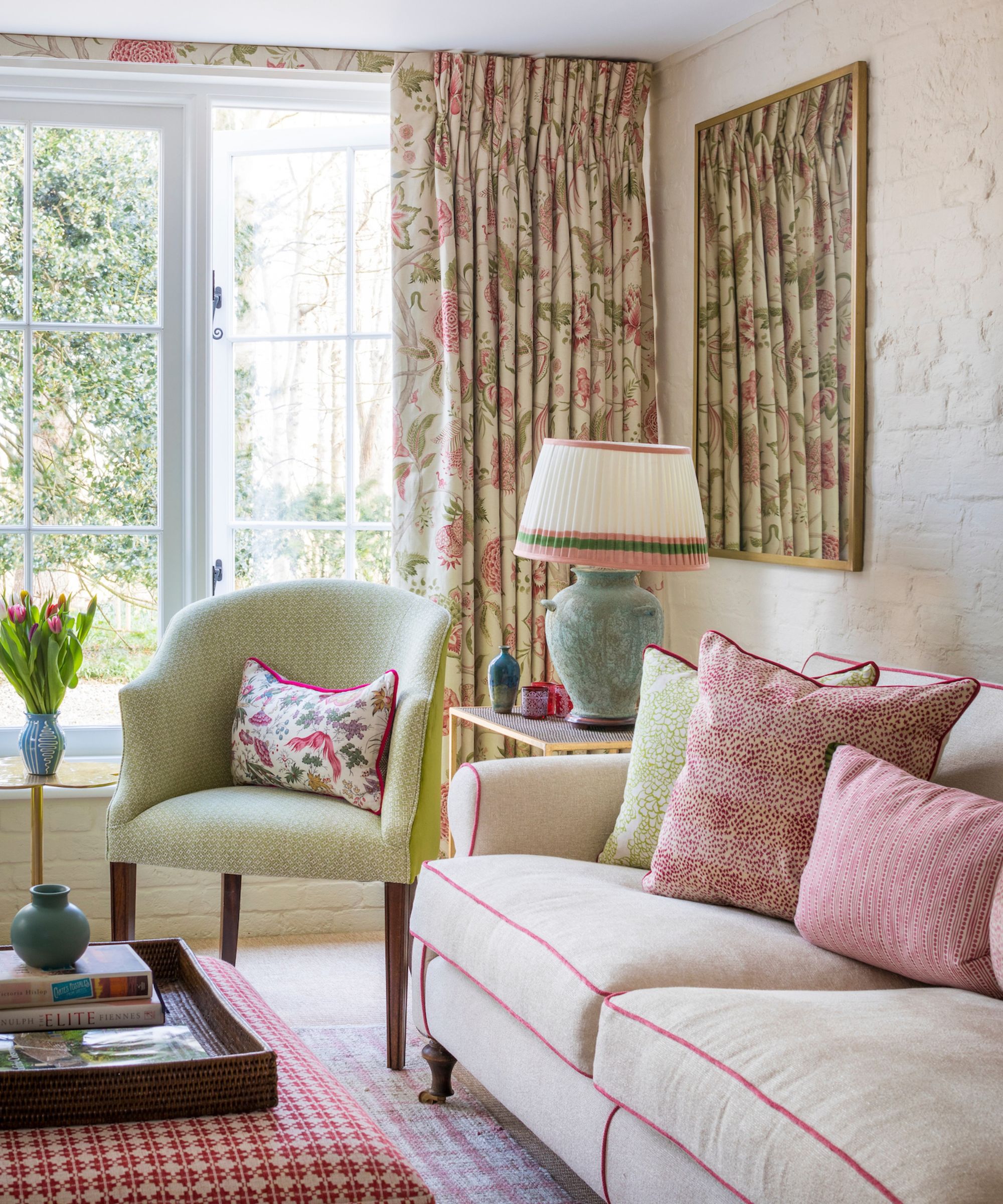
For curtains that stand the test of time, the right fabric is key. Always consider the other colors and prints within a room when choosing fabrics say the experts. If you have ornate wallpaper ideas, think about subtle curtains in plain fabrics, similarly, if you have a neutral scheme, a patterned curtain can be a fabulous way to add depth and interest.
'I always opt for neutral curtains if there's a lot of color and pattern in the room already. Not only does this help to balance the scheme, but if you have spectacular views out the window, then this will allow them to flow into the room making the room feel a lot larger,' advises Emma Deterding of Kelling Designs. 'If you have a neutral design scheme, then introducing some color and pattern through curtains will not only make a statement but will automatically draw the eye to the window, again making the room feel more spacious.'

British interior designer Emma Deterding is the founder and creative director of interior design studio Kelling Designs as well as the home brand Kelling Home. She is renowned for her masterful use of color and pattern and has worked on numerous domestic and commercial projects in London and overseas.
2. Invest in quality fabrics

Perhaps not surprisingly, fabric choice was cited as the most important thing to consider when we asked the experts for their curtain advice.
'By selecting different fabrics, patterns, and colors, you can steer how a room is perceived,' advises interior designer Henriette von Stockhausen, founder of VSP interiors. 'It’s essential to invest in good quality materials to achieve longevity. Avoid delicate fabrics like silks in windows that receive a lot of sunlight, as they can deteriorate quickly.'
'Sheer window treatments and light curtains can create illusions of spaciousness by allowing light to filter through, while heavier, thickly lined curtains can keep drafts and cold out in large rooms with tall windows, such as those in old country houses. Overall, curtains can make a significant difference in both the practical and aesthetic aspects of living spaces.'
3. Don't be afraid to be bold

When it comes to window treatment trends, curtains are still popular, in fact, interior designers and homeowners alike are going bigger and bolder with their fabric choices to make their curtains a real focal point.
‘One of the main fabric trends for curtains I see is patterns and motifs – curtains are becoming a centrepiece for the room, as such there is a willingness to go bolder with the fabric choice,' says Hayley McAfee, head of fabric and wallpaper brand Villa Nova. 'Alternatively combine natural textures to create a soft, ‘cocooned’ feel. This can be created by having a heavier blind with floaty curtains or even by adding a border to the bottom section of the curtains in a different texture. For example, a pair of linen drapes teamed with a border of velvet.’
'If you are bold and daring, then why not use the same bold fabric on the pelmet as your curtains, or opt for a contrasting design to really make your window dressings sing?' adds interior designer Emma Deterding.
4. Match curtains to walls for a seamless look

Opting for a pared-back look and matching curtains to your room color ideas is an easy way to keep rooms feeling timeless and restful. Decorating with neutrals over both walls and window treatments, as demonstrated here, is a look guaranteed to stand the test of time and is ideal for guest accommodation or rental properties. The benefit of using curtains over shutters or roller blinds in neutral spaces is that they add a layer of softness, helping add subtle warmth without overwhelming a scheme.
‘Curtains are a brilliant way of bringing warmth, interest and character to a room and as we continue to crave welcoming, cocooning spaces within our home they are very much in demand,' says Caroline Milns, Head of Interior Design, Zulufish.
5. Avoid excess draping and frills
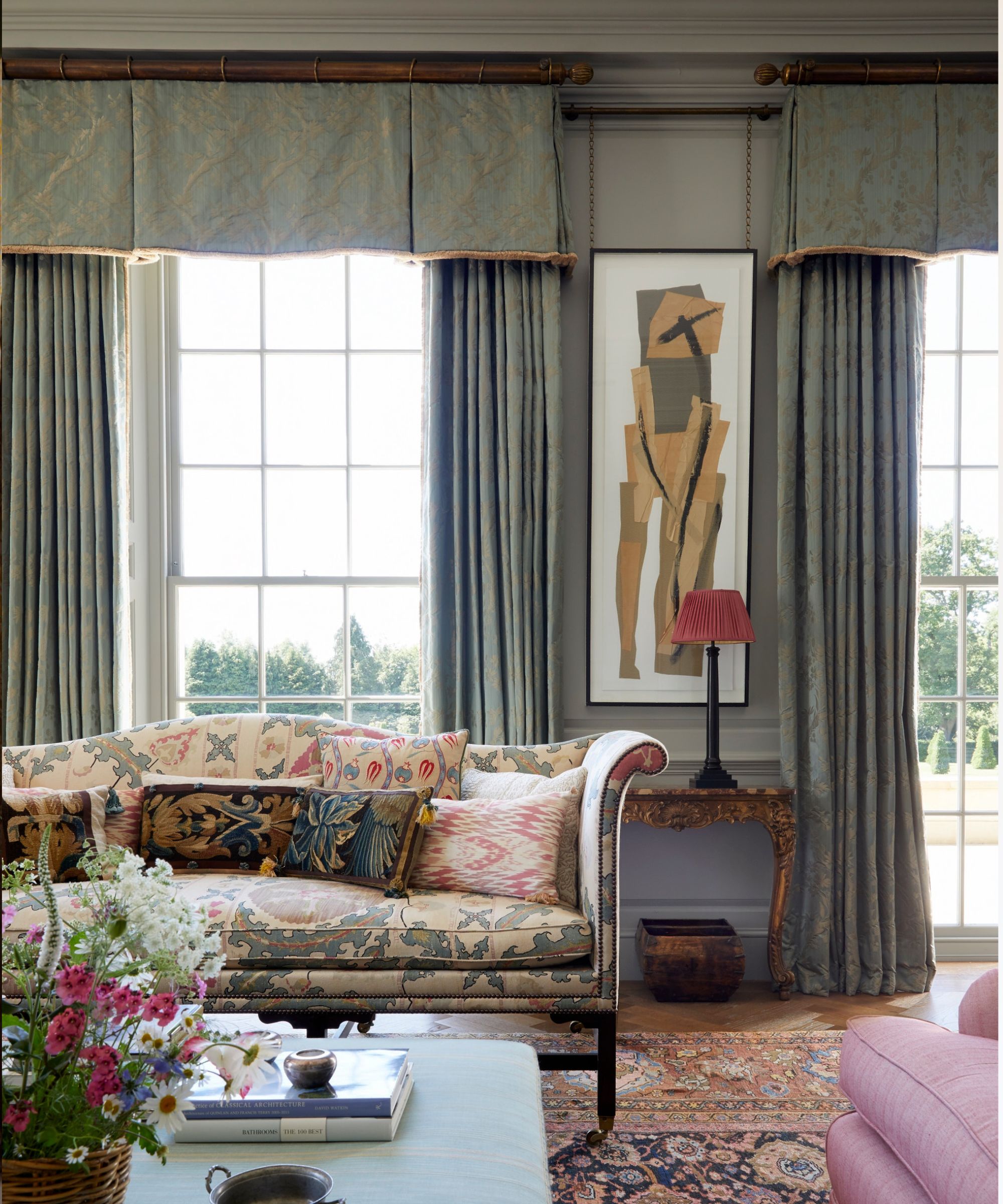
Heavy floor-to-ceiling drapes which gather on the floor paired with plenty of swags and frills can be great for achieving a flamboyant, maximalist look, but some feel the excess frills are what date curtains and give them a bad rep. 'For a timeless look, keep curtains classic on a pole without excessive draping. This style will remain elegant and last for many years,' suggests Henriette von Stockhausen.
To keep curtains looking good over the years, always ensure they are made to fit the space and are correctly fitted. 'The most common curtain mistake to avoid we see is clients mounting their curtains too low (you really want to mount them as high as you can to help emphasize the height of your ceilings), or not having it that their curtain material hits the floors,' adds Cathleen Gruver of Northern Virginia-based interior design firm Gruver Cooley.
If you want to keep things traditional with a pelmet then keep it simple, says Henriette von Stockhausen. 'I particularly favor simple curtains on a pole or a pelmet attached to a pole over heavily upholstered pelmets, which can feel too rigid and dated.'
6. Conceal curtain fittings for a contemporary look
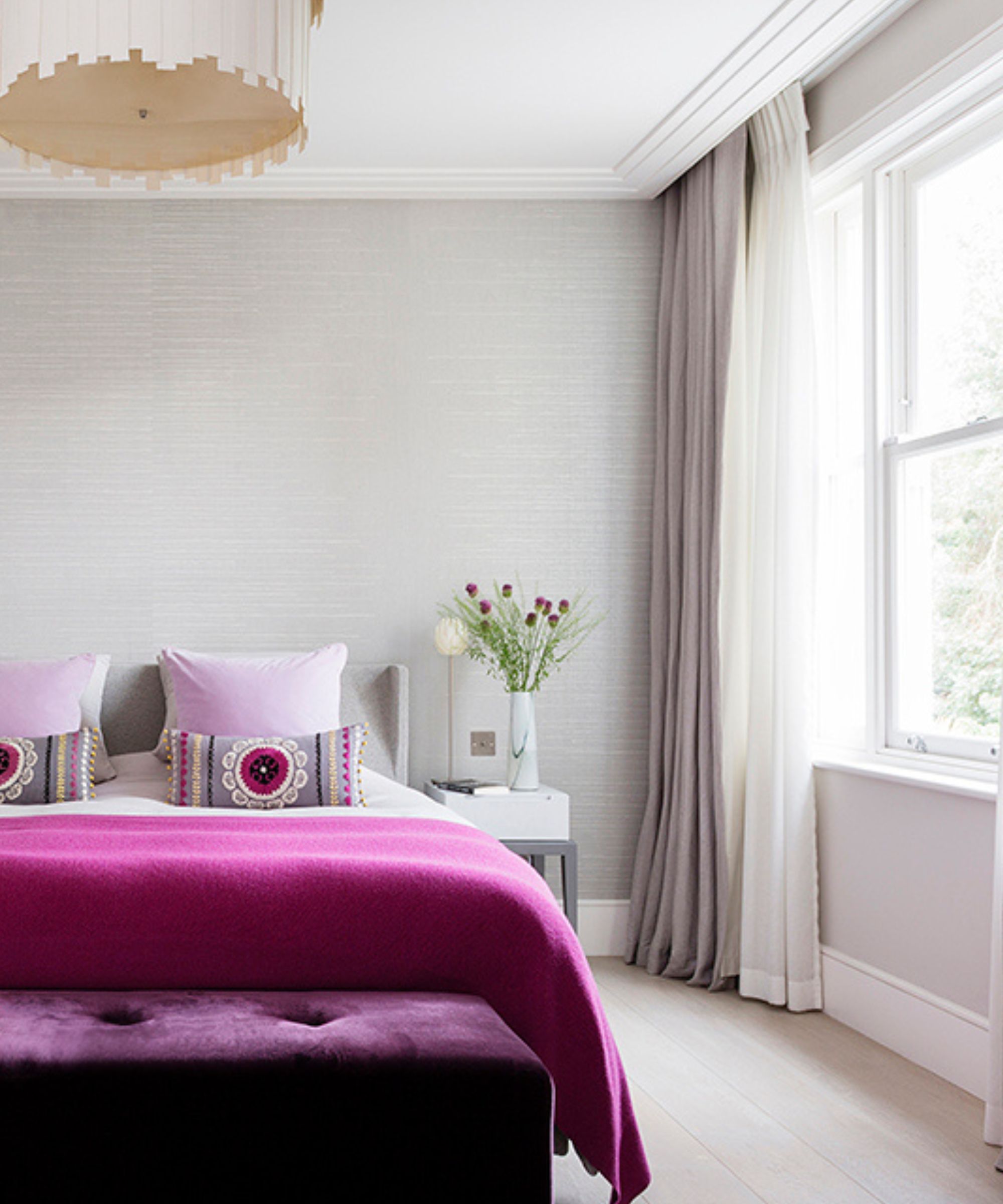
When it comes to choosing curtains it's not just material you need to consider – how curtains hang and the fittings you choose can have a big impact on the look and feel of the space. 'Curtains that finish flush with the floor will create a sleek, contemporary look, whilst allowing a slight ‘puddle’ of fabric on the floor will give a more traditional feel,' says Caroline Milns, Head of Interior Design, Zulufish.
Generally speaking, curtains attached to a track and which sit flush with the ceiling give a more streamlined, contemporary look, while those hung on poles with rings have a more traditional feel. 'I am very keen on running the curtains into the coffers or architectural molding (as pictured above), which allows the curtains to hang seamlessly, creating a constant flow of fabric from ceiling to floor. This keeps the overall appearance very pared back, so that the curtains just soften the angles of the window, creating a very timeless and elegant look' adds Caroline Milns.
'If you do want to give your curtains a really decorative touch then it’s worth considering a pelmet, these can be very simple with straight lines for modern curtain ideas, even finished in timber and not fabric, or perhaps try an unusual, geometric shape and play with the lines of it.'
7. Go for an on-trend cafe curtain
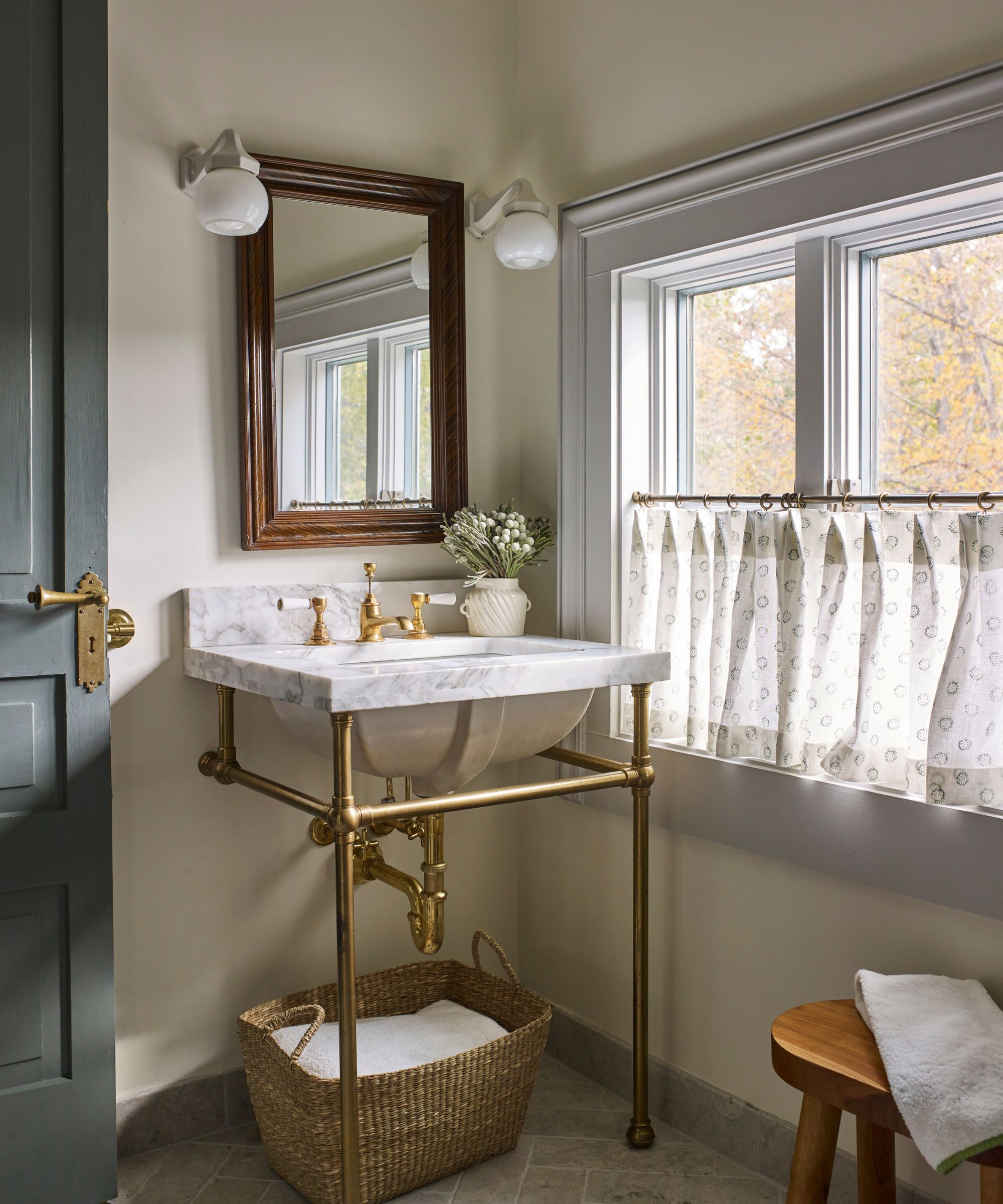
Cafe curtains are having a moment right now and are part of a wider interior design trend towards cafe-inspired interiors which has become a particularly popular aesthetic in kitchens. Cafe curtains are nothing new – the design, usually in lightweight linen, cotton or sheer fabric, has been around for decades, but fell out of fashion along with 80s net curtains. Now they're back and are popular with those looking to bring a touch of romantic European cafe culture into their homes.
Aesthetics aside, simple cafe curtains are a discreet way to provide privacy without overwhelming a room, plus they help soften spaces such as bathrooms which can often feel stark and clinical.
For interior designer Louise Copeland, the cafe curtain is the perfect solution for this small bathroom in her Germantown, NY project. 'The window in this bathroom is quite low and so we didn’t want to cover it completely and block the beautiful view outside. Instead, we applied a sheer curtain with a contemporary print to make the traditional curtain more updated, making the curtain as short as possible while still providing privacy,' explains Louise Copeland, founder of L.B. Copeland Inteirors.
8. Choose a classic pinch pleat
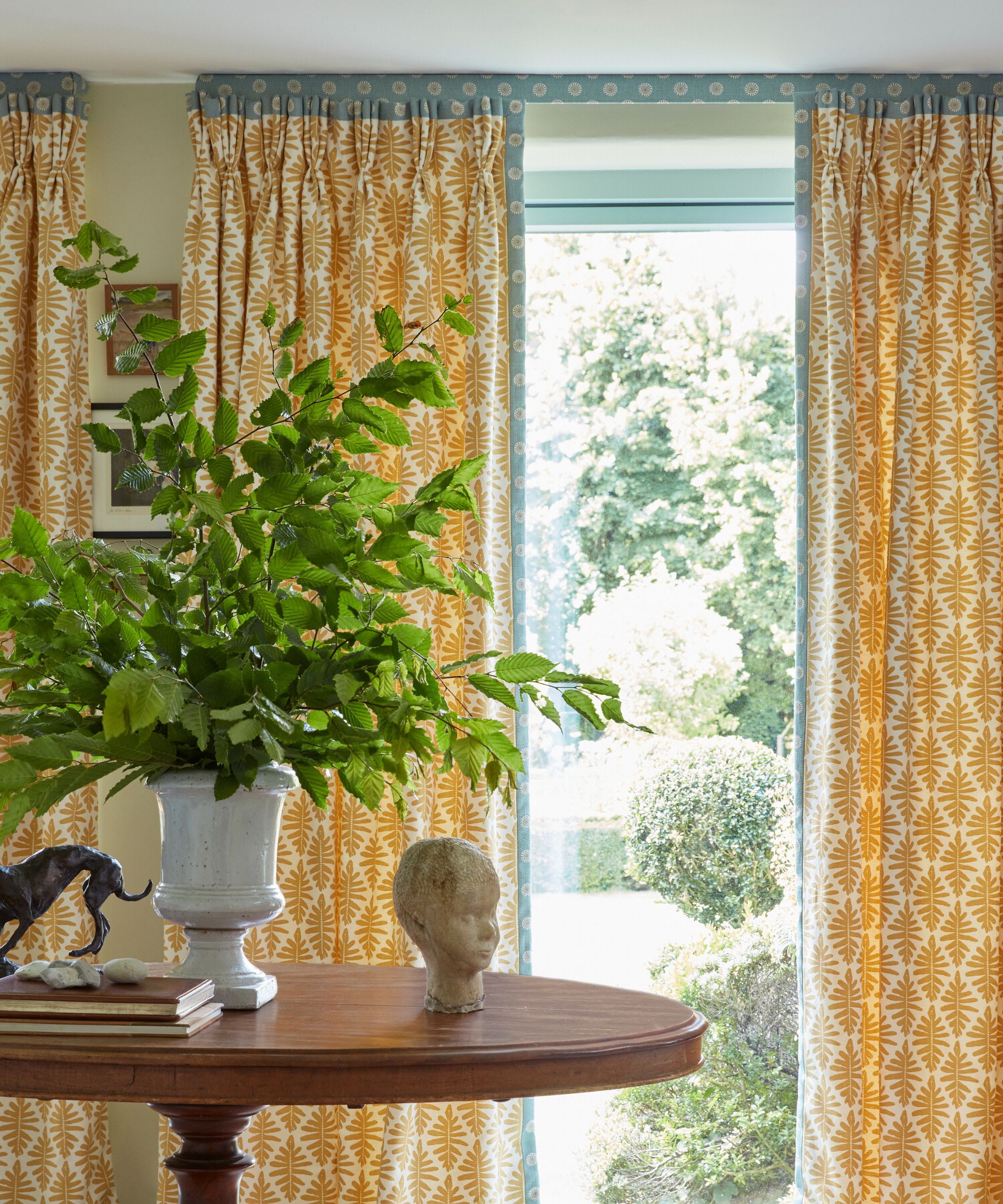
Just as the curtain fittings are important, the curtain heading style you choose can have a big impact on how your curtains look and feel, too. For a sleek look consider a simple wave curtain or a tailored pinch pleat. Alternatively, if you're a fan of the vintage or cottage curtain look go for a cottage pleat. You could even have a flop-over-frill for a really soft, pretty look.
Currently the pinch pleat is a favourite among many interior designers. 'Pinch pleat curtains are having a moment – particularly in more formal spaces,' says Kristen Scharer of the Washington, DC and Ohio-based Kristen Scharer Interiors. Many of my clients incorporate curtains more for look than function in, say, a living room or dining room. The pinch pleat allows the fabric to remain tailored and crisp- bringing elements of elegance, warmth and sophistication to a room without the fuss.'
Interior designer Kathleen Groomer also favors a pinch pleat. 'I think keeping hardware on your curtains minimal is great, and getting a curtain with a pinch pleat can help elevate your space as well.'
For more timeless curtain inspiration, we explore in our separate piece, do curtains need to match?
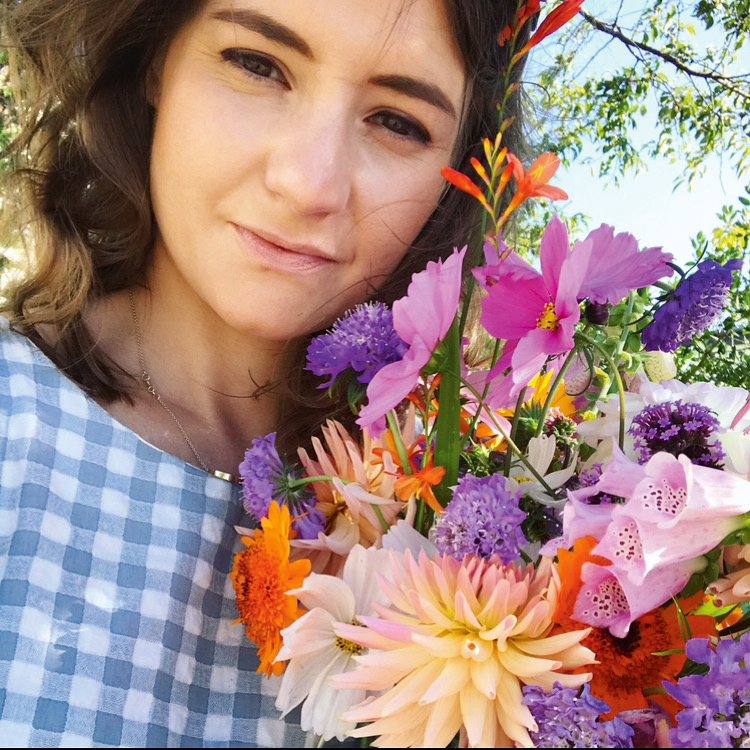
Pippa is a contributor to Homes & Gardens. A graduate of Art History and formerly Style Editor at Period Living, she is passionate about architecture, creating decorating content, interior styling and writing about craft and historic homes. She enjoys searching out beautiful images and the latest trends to share with the Homes & Gardens audience. A keen gardener, when she’s not writing, you’ll find her growing flowers on her yard for styling projects.
